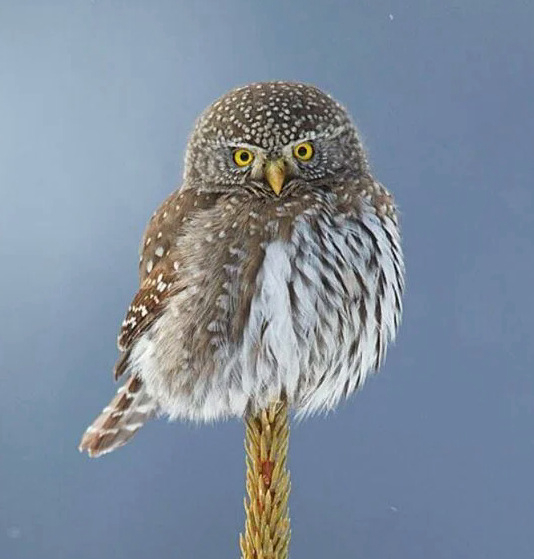
A Northern Pygmy Owl on territory (photo by Donald Jones).

A view through the “peeper cam” shows a Northern Pygmy Owl in its nesting cavity.
|
The Owl Research Institute (ORI) is using a cavity inspection camera, also referred to as a “peeper cam,” to locate, assess, and monitor the nesting activities of small cavity nesting owls. The modified camera, which is attached to a 50-foot extension pole is used to investigate cavities located high in tall trees. Used mostly during a long-term study of Northern Pygmy Owls, ORI biologists also use the “peeper cam” to search for and study cavity nesting Northern Saw-whet Owls, Western Screech Owls, Boreal Owls, and even larger Barred Owls.
This technology has allowed ORI biologists to discover that unlike most other owls, Northern Pygmy Owls hatch synchronously (all at once), which was revealed when the biologists began checking for and recording the intervals between egg laying as the female lays each her clutch. Biologists also record clutch sizes, nestling development, foods, nesting success, and more with the “peeper cam.” ORI staff are quick to point out that using the “peeper cam” also increases their upper body strength, as a result of transporting the heavy camera and pole to remote nest sites, often in the interior of mountain forests in western Montana.
For more information about the Owl Research Institute and work being conducted there, including cavity nesting owl studies using the “peeper cam,” see Whooo is in there? Peeper cam lets us see what’s happening in owl cavities (owlresearchinstitute.org)